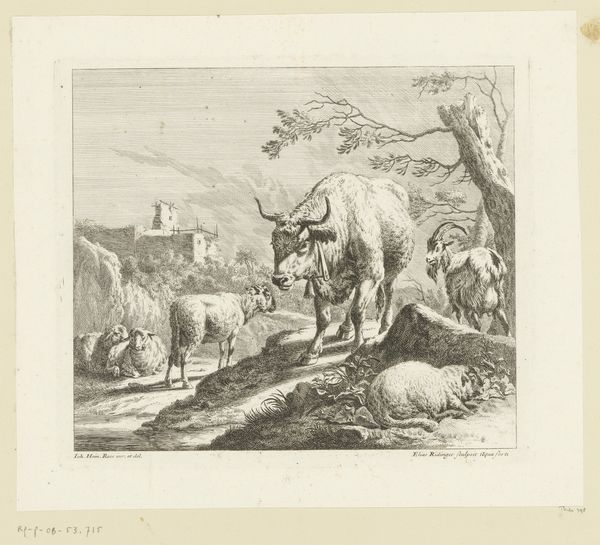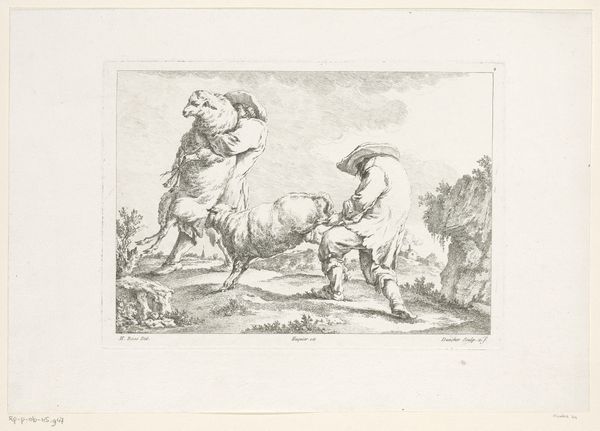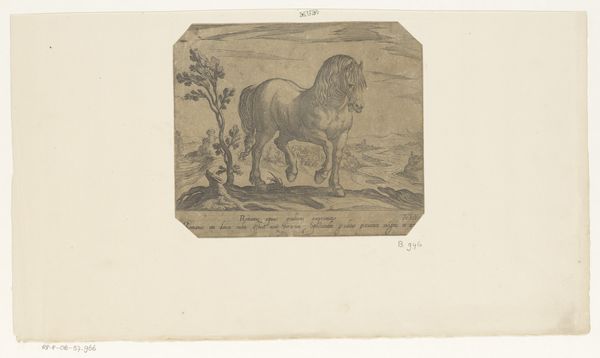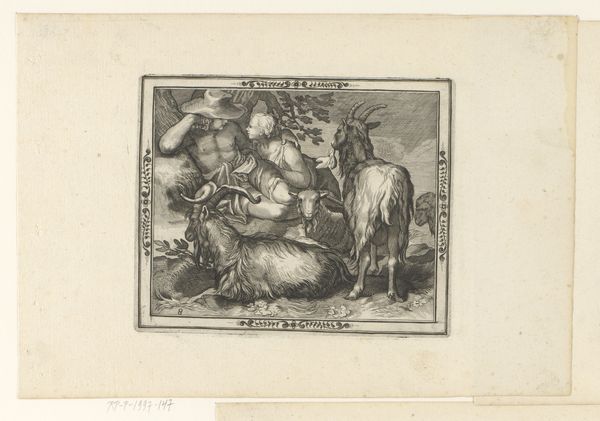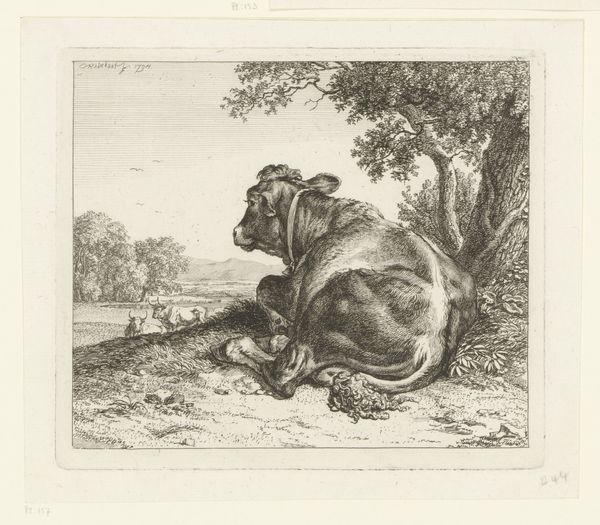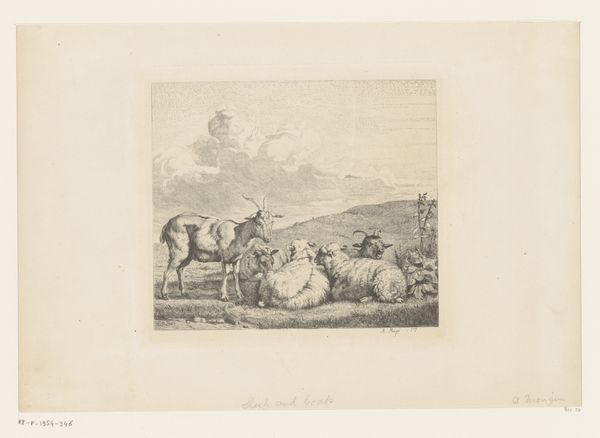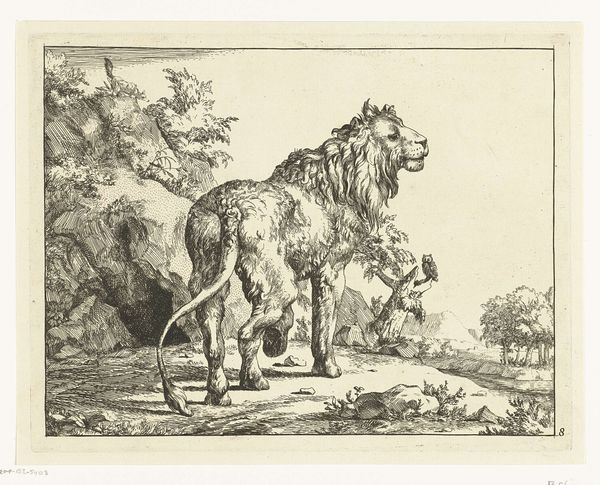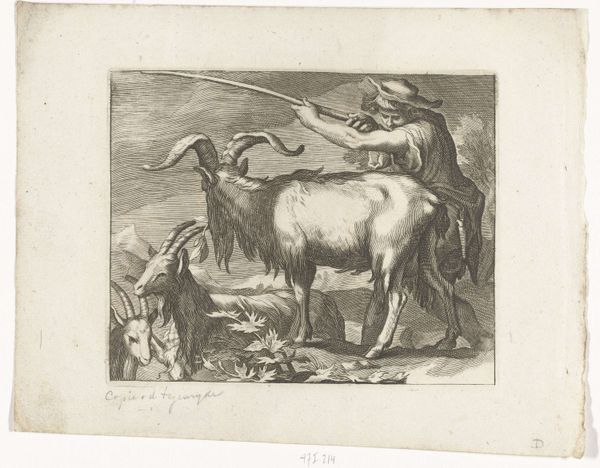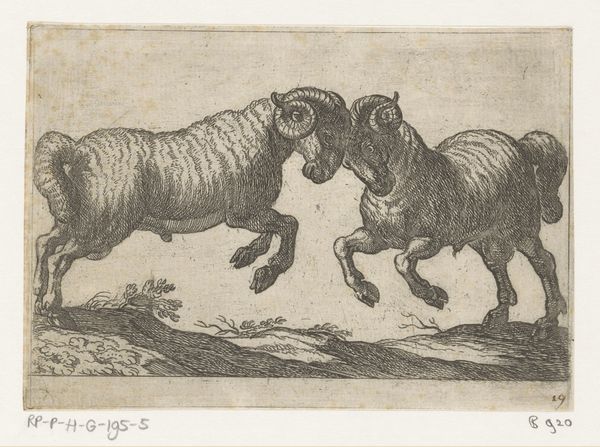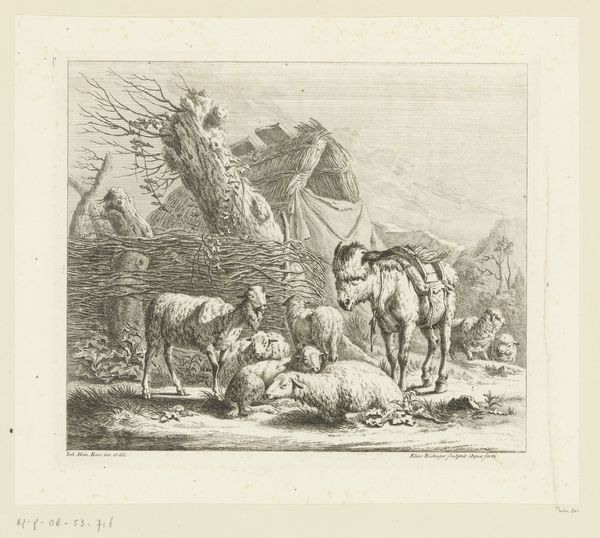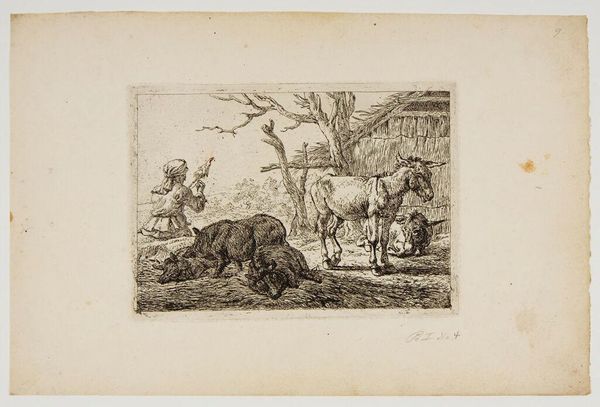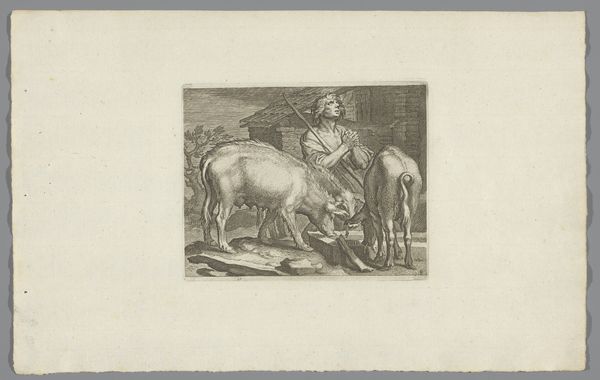
print, etching
#
animal
# print
#
etching
#
landscape
#
romanticism
#
genre-painting
#
history-painting
#
realism
Dimensions: height 116 mm, width 173 mm
Copyright: Rijks Museum: Open Domain
Editor: Here we have Eugène Verboeckhoven’s "Fable of the Lion and the Prey," an etching from 1830. I’m immediately struck by the contrast between the dramatic scene in the foreground and the seemingly indifferent animals in the background. What jumps out at you? Curator: What interests me first is the strategic arrangement of figures. The lion, centrally placed, embodies power, emphasized by the prone gazelle it dominates. Notice how Verboeckhoven uses line to create texture, especially in the lion’s mane, creating a sense of palpable energy. How do you see this visual weight impacting the overall composition? Editor: I guess it forces you to confront the raw reality of the scene; yet the other animals are almost comically unaffected. The light source highlights this intense interaction, with everything else receding. Is there something significant in the rendering of depth that makes the narrative clearer? Curator: Precisely. The shallow depth of field directs our attention, intensifying the drama of predation. This serves as a foreground element contrasting against what we may perceive to be indifferent passivity. Reflect on the interplay between the texture of the foreground versus the minimalist lines shaping the background: Does this tell you something about Verboeckhoven's aesthetic decisions? Editor: It highlights the lion’s dominance but also the fragility of the prey. That contrast seems intentional through the specific lines and shapes used. The scene isn’t just documented; it's orchestrated, isn’t it? Curator: Precisely, with careful formal organization for maximum emotive impact. Note too how he employed realism principles here—the composition leans on that, adding to our analysis, while enhancing Verboeckhoven's construction. Editor: I see now. It’s not just a depiction of an event, it's an argument—a visually compelling construction of nature. Thanks, I didn't think of it that way before. Curator: Indeed! The success of the work is the result of visual language to highlight emotive states.
Comments
No comments
Be the first to comment and join the conversation on the ultimate creative platform.
